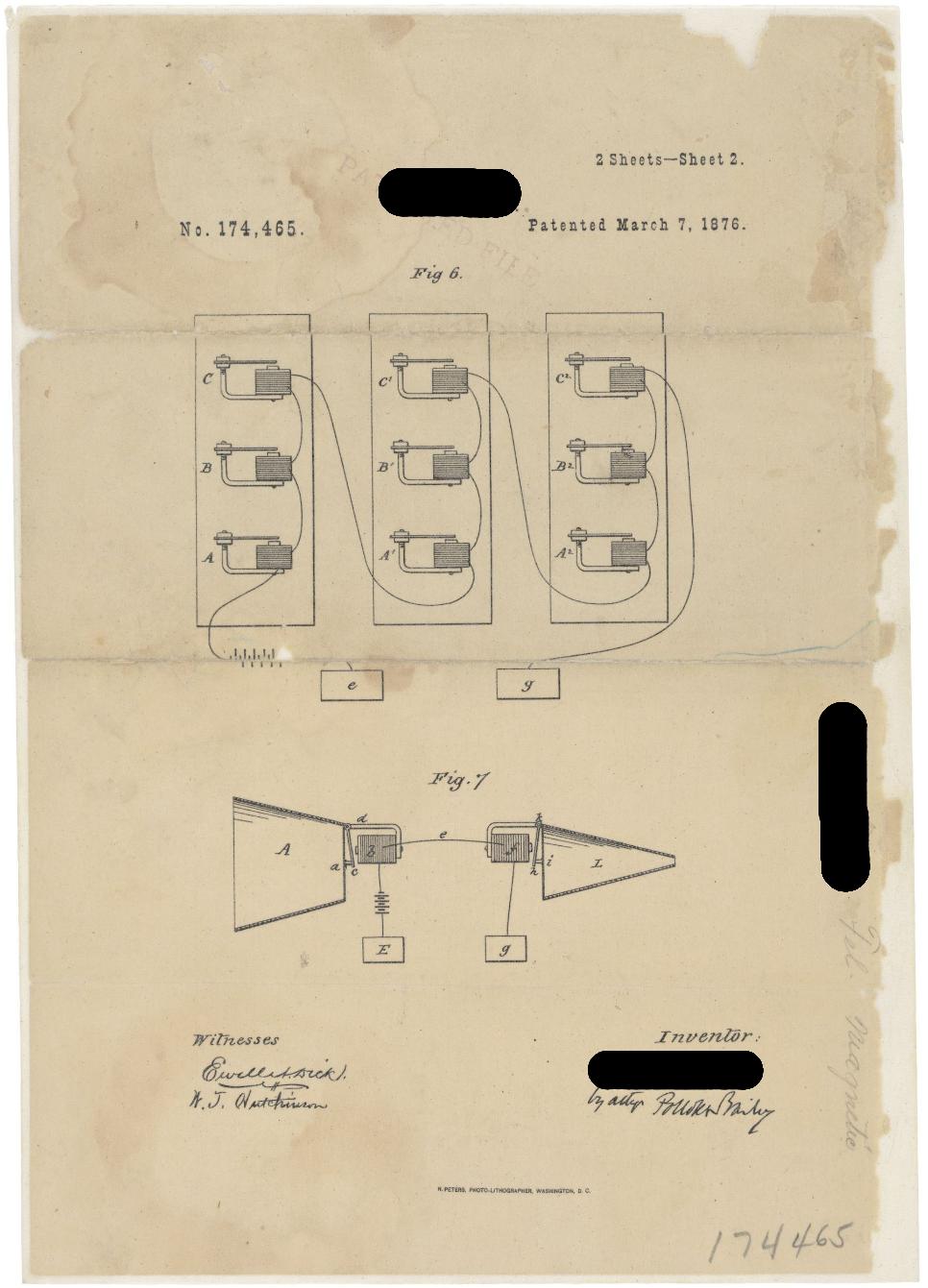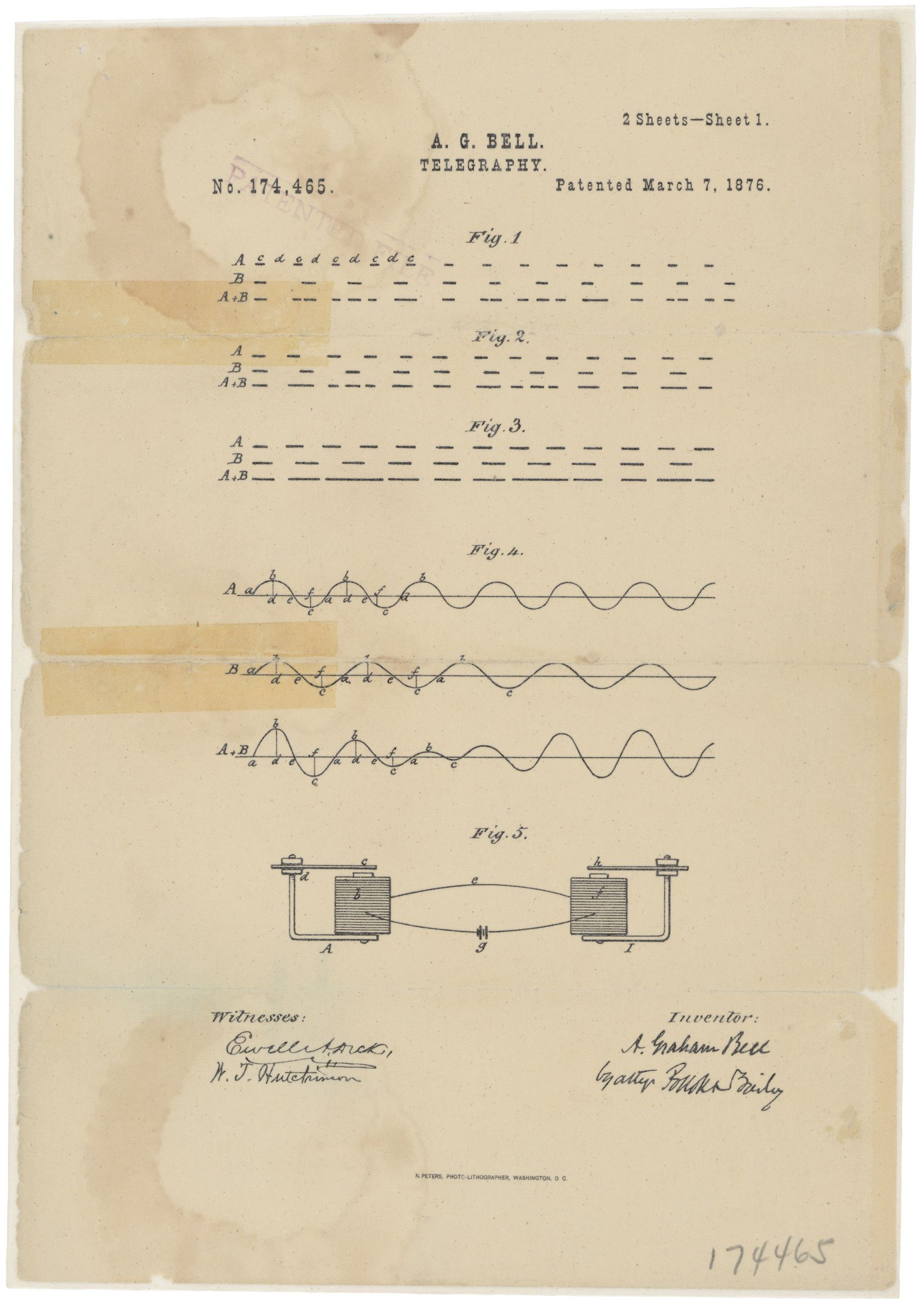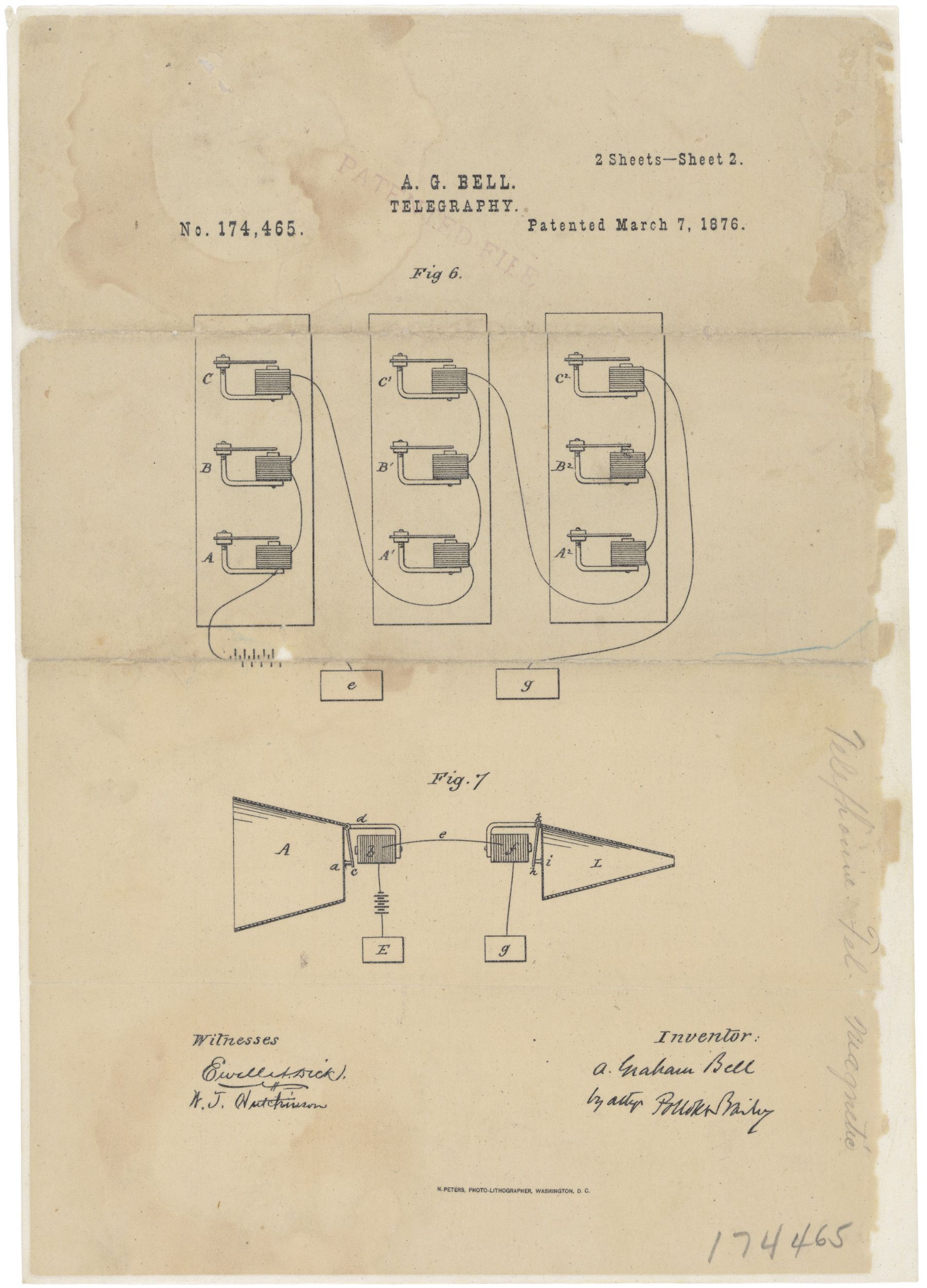What is Patent Number 174,465?
Focusing on Details: White Out/Black Out
All documents and text associated with this activity are printed below, followed by a worksheet for student responses.Introduction
You will see a patent drawing for an invention with its name and its inventor's name hidden.
Quickly scan this document. What do you notice first?
Name:
Class:
Class:
Worksheet
What is Patent Number 174,465?
Focusing on Details: White Out/Black Out
Examine the documents included in this activity and write your response in the space provided.
- Describe the document and the invention it depicts as if you were explaining it to someone who can’t see it.
- Based on what you can see, what do you think is the purpose of this invention? List evidence from the document to explain your opinion.
After you have made a hypothesis, click "View Entire Document" to reveal the invention.
Your Response
1
Activity Element
Drawing for Improvements in Telegraphy
Page 2

Conclusion
What is Patent Number 174,465?
Focusing on Details: White Out/Black Out
- What positive effects has this invention had over time?
- What negative effects has this invention had over time?
Your Response
Document
Drawing for Improvements in Telegraphy
3/7/1876
After years of experiments, Alexander Graham Bell finally found a way to transmit speech. Bell’s attorney filed this patent application for the telephone on February 14, 1876. The patent was issued on March 7, 1876
This primary source comes from the Records of the Patent and Trademark Office.
National Archives Identifier: 595437
Full Citation: Drawing for Improvements in Telegraphy; 3/7/1876; Records of the Patent and Trademark Office, . [Online Version, https://www.docsteach.org/documents/document/drawing-for-improvements-in-telegraphy, April 26, 2024]Drawing for Improvements in Telegraphy
Page 1

Drawing for Improvements in Telegraphy
Page 2

